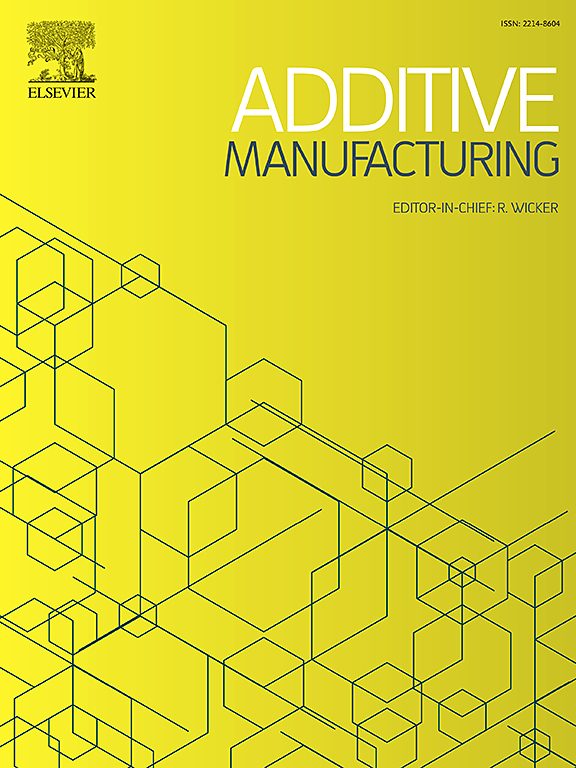Direct ink writing of coaxial electrostatic fibers with customizable cross-sections and functional properties
IF 10.3
1区 工程技术
Q1 ENGINEERING, MANUFACTURING
引用次数: 0
Abstract
Electrostatic devices have attracted significant interest in recently years, with wide applications in areas such as actuators, sensors, adhesive devices, etc. The common fabrication method of electrostatic devices is through layer-by-layer stacking. However, this process is time-consuming and restricts both design flexibility and performance, presenting a substantial challenge for the rapid development of complex electrostatic systems. To address this problem, we report a method for fabricating coaxial electrostatic fibers (CEFs) using direct ink writing (DIW) method. Silicone-based inks with high conductivity and a high dielectric constant were developed, with their rheological properties optimized for smooth, precise printing. Using these customized inks, electrostatic fiber structures with varying geometries, including one-dimensional fibers, two-dimensional meshes and layered structures, as well as three-dimensional coils and meshes, were successfully manufactured. By modifying the nozzle shape and adjusting the flow rate multiplier, diverse fiber cross-sections and diameters were achieved. The coaxial printing of fiber, layered clutch, and shape morphing devices demonstrated that utilizing highly-dielectric inks and customized cross-sectional geometries significantly improved the device performance. This technique marks a significant advancement in the rapid and efficient fabrication of electrostatic devices, expanding their potential applications in actuators, robotics, haptic interfaces, etc.
求助全文
约1分钟内获得全文
求助全文
来源期刊

Additive manufacturing
Materials Science-General Materials Science
CiteScore
19.80
自引率
12.70%
发文量
648
审稿时长
35 days
期刊介绍:
Additive Manufacturing stands as a peer-reviewed journal dedicated to delivering high-quality research papers and reviews in the field of additive manufacturing, serving both academia and industry leaders. The journal's objective is to recognize the innovative essence of additive manufacturing and its diverse applications, providing a comprehensive overview of current developments and future prospects.
The transformative potential of additive manufacturing technologies in product design and manufacturing is poised to disrupt traditional approaches. In response to this paradigm shift, a distinctive and comprehensive publication outlet was essential. Additive Manufacturing fulfills this need, offering a platform for engineers, materials scientists, and practitioners across academia and various industries to document and share innovations in these evolving technologies.
 求助内容:
求助内容: 应助结果提醒方式:
应助结果提醒方式:


